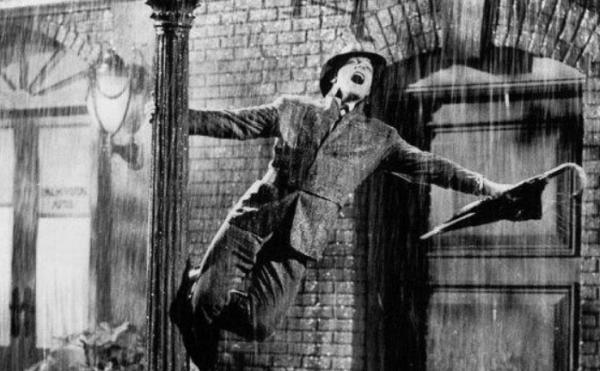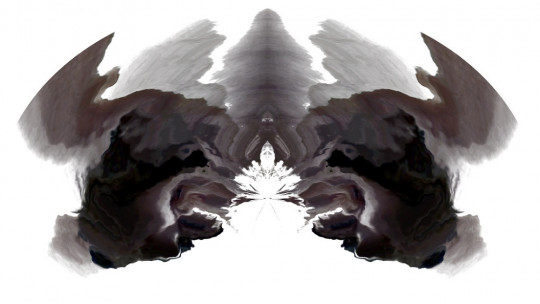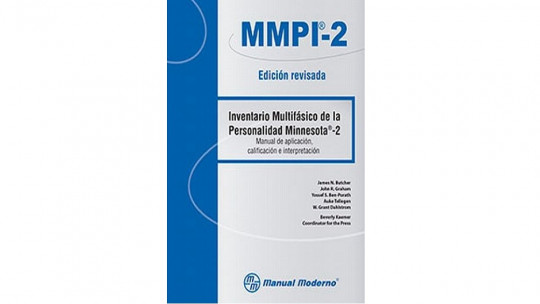The person in the rain test, or PITR, is a projective drawing test used in psychology to gather information about human behavior and the personality of individuals. It is a graphic-projective tool that is framed in the theories of psychoanalysis. It seeks to respond, through subjective systematization, to people’s deficiencies, traumas or conflictive behaviors through the elements they possess.
For this reason, the person in the rain test is one of the most used instruments in different areas such as education, work and even clinical psychology. Do you want to know more about this test? In this PsychologyFor article we will talk about the person in the rain test: what it is and how to interpret it.

The Person in the Rain Test (PIRT) is a fascinating psychological tool used to assess personality traits, emotions, and cognitive processes. It’s part of projective tests, a category of psychological assessments designed to reveal hidden aspects of the personality by analyzing responses to ambiguous stimuli. In this article, we will delve into what the Person in the Rain Test is, its origins, how it is administered, and how to interpret the results.
What is the person in the rain test?
The Person in the Rain Test is a projective test where individuals are asked to describe or draw a person in the rain. The test aims to uncover underlying emotions, attitudes, and personality traits through the interpretation of the imagery and descriptions provided.
The Concept Behind the Test
The concept behind the PIRT is that when people are asked to project their thoughts and feelings onto ambiguous images, they reveal subconscious aspects of their psyche. The scenario of a person in the rain serves as a metaphor, prompting responses that reflect the respondent’s internal world.
The person in the rain test, also known as the Figure in the Rain Test, is a projective technique used in psychology and psychological evaluation. It is said to have been developed by HM Fay in the 1920s and to have been complemented by the contributions of the American psychologist John E. Exner in the 1960s, although its definitive authorship is still unclear.
It is a very simple test, in which you only need paper and pencil. You are asked to the person who draws, describes and gives meaning to a scene of a person in the rain, as well as the feelings and thoughts it evokes. Additionally, she is encouraged to project her own experiences and emotions onto the figure of the person in the rain.
The main objective of the person in the rain test is obtained information about the personality of the individual as well as their attitudes towards life situations, the management of emotions and internal conflicts.
It is considered a projective technique because the person is expected to project aspects of their own personality into the interpretation of the sheet. However, it is not a standardized test and only professionals in psychology, psychiatry and human behavior can analyze the data provided by this test.
Origins and Development
The Person in the Rain Test is a part of projective testing methods developed in the early 20th century. It is inspired by the work of Carl Jung and other psychoanalysts who believed that understanding the unconscious mind is key to understanding human behavior.
Historical Background
- Early Development: The roots of projective testing can be traced back to the work of Carl Jung and Sigmund Freud, who developed techniques to explore the unconscious mind.
- Modern Adaptations: Over time, the test has evolved, incorporating various elements from other psychological theories and testing methods.
What is the person in the rain test for?
The person in the rain test is a projective test that aims to portray through an image or symbolism, different aspects of personality that are lodged in the subconscious, and that are difficult to express.
There is no right or wrong way to draw, since everyone is free to capture what they see fit on the sheet of paper, since their emotions will be reflected in the image. Each person must tell a story consistent with what she drew and explain what emotions he has projected into the image.
That said, let’s look at the main uses and objectives of the test of the person in the rain:
- Personality Exploration: This test allows you to obtain information about each person’s personality, including attitudes, emotions, ways of coping and internal conflict. Through the responses and interpretation of the scene, personality traits, coping styles, and thinking and emotional patterns can be identified.
- Self-knowledge: It helps the individual to explore and reflect on their own emotions, thoughts and experiences, as well as to reveal subconscious aspects of personality and facilitate awareness of them.
- Explore underlying conflicts and emotions: Through the interpretations and associations that the individual makes in relation to the figure in the rain, it is possible to detect possible internal conflicts, emotional difficulties and negative thought patterns.
- Support for clinical evaluation: The instrument can be used as part of a broader assessment in the clinical setting, to help professionals better understand the individual, identify specific symptoms or disorders, and plan appropriate treatment.
It is important to note that the person in the rain test It is not a diagnosis in itself.but one tool to obtain information and generate reflection Your results should always be interpreted by a psychologist.
How the Test is Administered
Administering the Person in the Rain Test involves a series of steps designed to ensure the responses are as authentic and unfiltered as possible.
Steps to Administer the Test
- Introduction: Explain the purpose of the test and assure the participant that there are no right or wrong answers.
- Instruction: Ask the participant to draw a person in the rain. Encourage them to include details such as the person’s appearance, the setting, and their actions.
- Observation: Observe the participant’s reactions during the task. Take note of any hesitations, preferences, or emotional responses.
Materials Needed
- Paper and pencil or pen.
- A quiet, comfortable space to ensure the participant feels at ease.
What the Drawing Can Reveal
The interpretation of the drawing can provide insights into the individual’s personality, emotions, and mental state. Here’s a deeper look at what different aspects of the drawing might indicate:
Psychological Insights
- Emotional State: The intensity and type of the rain can reflect the individual’s emotional state. Heavy rain might indicate stress or sadness, while light rain might suggest calmness or serenity.
- Self-Perception: How the person is drawn (e.g., posture, clothing, facial expression) can reveal self-perception and self-esteem.
- Coping Mechanisms: The way the person deals with the rain can show coping mechanisms. For example, seeking shelter might indicate a preference for avoiding problems.
Practical Applications
The Person in the Rain Test is used in various settings, including clinical psychology, counseling, and educational assessments. Here’s how it can be applied effectively:
In Clinical Settings
- Diagnosing Mental Health Issues: The test can help identify underlying mental health issues such as depression, anxiety, or trauma.
- Therapeutic Insights: It provides therapists with valuable insights into a patient’s inner world, facilitating more targeted therapeutic interventions.
In Educational and Occupational Settings
- Student Evaluation: Teachers and counselors use the test to understand students’ emotional and psychological well-being.
- Team Building: In corporate environments, the test can be used to assess team dynamics and individual roles within a group.
Limitations of the Test
While the Person in the Rain Test is valuable, it is not without limitations. Understanding these limitations is crucial for effective use and interpretation.
Potential Drawbacks
- Subjectivity: The interpretation of the test can be highly subjective, varying significantly between different practitioners.
- Cultural Bias: The test may not be universally applicable across different cultural contexts, as the symbolism of rain and other elements can vary.
Interpretation of the person in the rain test
Interpreting the Person in the Rain Test involves analyzing the drawings and descriptions based on various psychological theories. Here’s how to break down and understand the results:
Key Elements to Consider
- Details in the Drawing: Look at the specifics such as the size of the person, the rain, the background, and any other elements included.
- Emotion and Expression: Analyze the facial expressions and body language of the person in the drawing. Are they happy, sad, or indifferent?
- Symbolism and Metaphor: Consider the symbolism behind the rain and the person’s depiction. Rain might represent cleansing, sadness, or renewal, depending on the context.
The ease of interpreting the person in the rain test is what makes it a widely used tool in different social settings. It is a test aimed at people from 6 years of age and, basically, you only need a pencil and a sheet of paper to start the test.
To do this, the professional must ask the patient to draw a person in the rain, without giving further details of the elements. The objective is for the individual to understand that he is going to face a natural and even disturbing phenomenon, to see how he reacts to it and with what elements he can defend himself.
Afterwards, the professional will analyze each of the elements present in the image, taking into consideration the following elements.
The umbrella
The umbrella is a main element that represents the person’s defense against the rain. Therefore, if the individual draws an umbrella very small, it means that he has little desire to defend himself of certain situations or who shows shyness and insecurity. If, on the other hand, the umbrella is very large, it means that you are focused on your convictions and that you have a lot of personal security.
Likewise, an umbrella closed is related to resignation and passivity while if the umbrella shows holes or is drawn like a spear, it could be related to a manipulative personality or one who enjoys hurting others.
Soil
The ground represents the stability of people, so, if it is weakly drawn means that the individual shows insecurity or worry If the person does not draw the ground, it may be that he is still in a process of exploration and that he has not defined certain parameters in his life. On the other hand, if the ground is drawn with too much pressure, it is a symbolism of rage, anger or aggressiveness. In this article you will see How to control anger and aggression.
Natural elements
The presence of puddles, the shape of the drops and the intensity of the rain also have their interpretation in the person in the rain test. For example, yes the rain is fine, and his umbrella is of an appropriate size, it means that the person can take charge of his problems and that knows how to manage his emotions If the rain is torrential, it means that the individual is very stressed or is in a hostile environment.
It may be that the person refuse to draw the rain and that is usually associated with an oppositional personality and that he does not like to follow certain established rules. Additionally, if puddles or lightning bolts are added to the drawing, it is possible that the subject is describing that he is under more pressure than he can withstand. If you want to know more about your personality, we invite you to take this Personality Test: 16 factors.
Person
The person in the rain test includes a human figure, although many children usually draw flowers or animals and there is no problem. Now, if the person has an asymmetrical shape may be associated with a lack of emotional balance When the figure is arranged to the right, generally, the individual feels attachment to the paternal aspect, and if the arrangement is to the right, then to the maternal aspect.
In addition, professionals often analyze the width of the shoulders, the arrangement of the fingers and even the musculature in search of personality traits projected on the figure. He image size also has a meaning associated with it since if the drawing is very small it reflects low self-esteem, and if it covers the entire page it may be symbolizing an over-projection of self-esteem, which also causes an imbalance in the personality.
In any case, only trained experts can give an impression of the test results of the person in the rain, which in itself does not represent a definitive diagnosis. This test must be accompanied by the tests and dynamics that mental health professionals determine for each case.
The Person in the Rain Test is a unique and insightful tool that offers a glimpse into the subconscious mind. By analyzing the drawing and the associated narrative, we can gain valuable insights into a person’s thoughts, feelings, and personality. While it has its limitations, when used appropriately, the test can be a powerful asset in psychological assessment and therapeutic practice.
FAQs
What is the Person in the Rain Test used for?
The Person in the Rain Test is used to assess personality traits, emotions, and cognitive processes by analyzing a person’s drawing of a person in the rain.
How is the Person in the Rain Test administered?
It is administered by asking the participant to draw a person in the rain and then discussing the drawing’s details and the emotions it evokes.
What can the Person in the Rain Test reveal about an individual?
It can reveal insights into the individual’s emotional state, coping mechanisms, self-perception, and underlying mental health issues.
Are there any limitations to the Person in the Rain Test?
Yes, its subjectivity and potential cultural biases are significant limitations, affecting its universality and accuracy across different populations.
How is the Person in the Rain Test used in therapy?
In therapy, it helps therapists understand the client’s inner world, facilitating targeted interventions and supporting the therapeutic process.
This article is merely informative, at PsychologyFor we do not have the power to make a diagnosis or recommend a treatment. We invite you to go to a psychologist to treat your particular case.
If you want to read more articles similar to Person in the rain test: what it is and how to interpret it we recommend that you enter our Personality category.
Bibliography
- Chung, K. (2012). “The Person in the Rain” Drawing Response Characteristics and Ways of Coping with Stress in University Students. Korean Journal of Art Therapy, 19, 1029-1044. https://doi.org/10.35594/kata.2012.19.5.004
- Hammer, E. F. (1958). The Clinical Application of Projective Drawings. Springfield, IL: Charles C Thomas.








